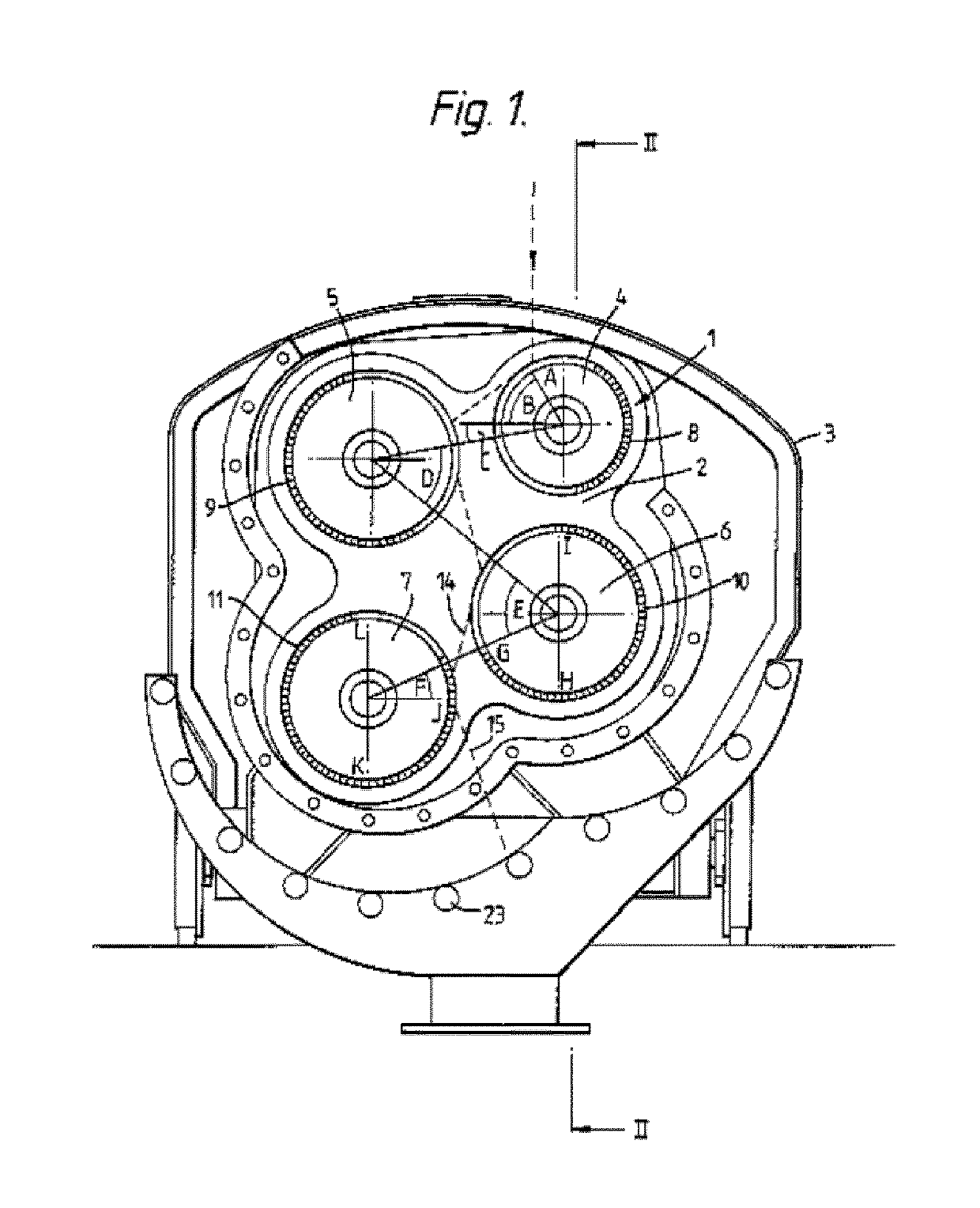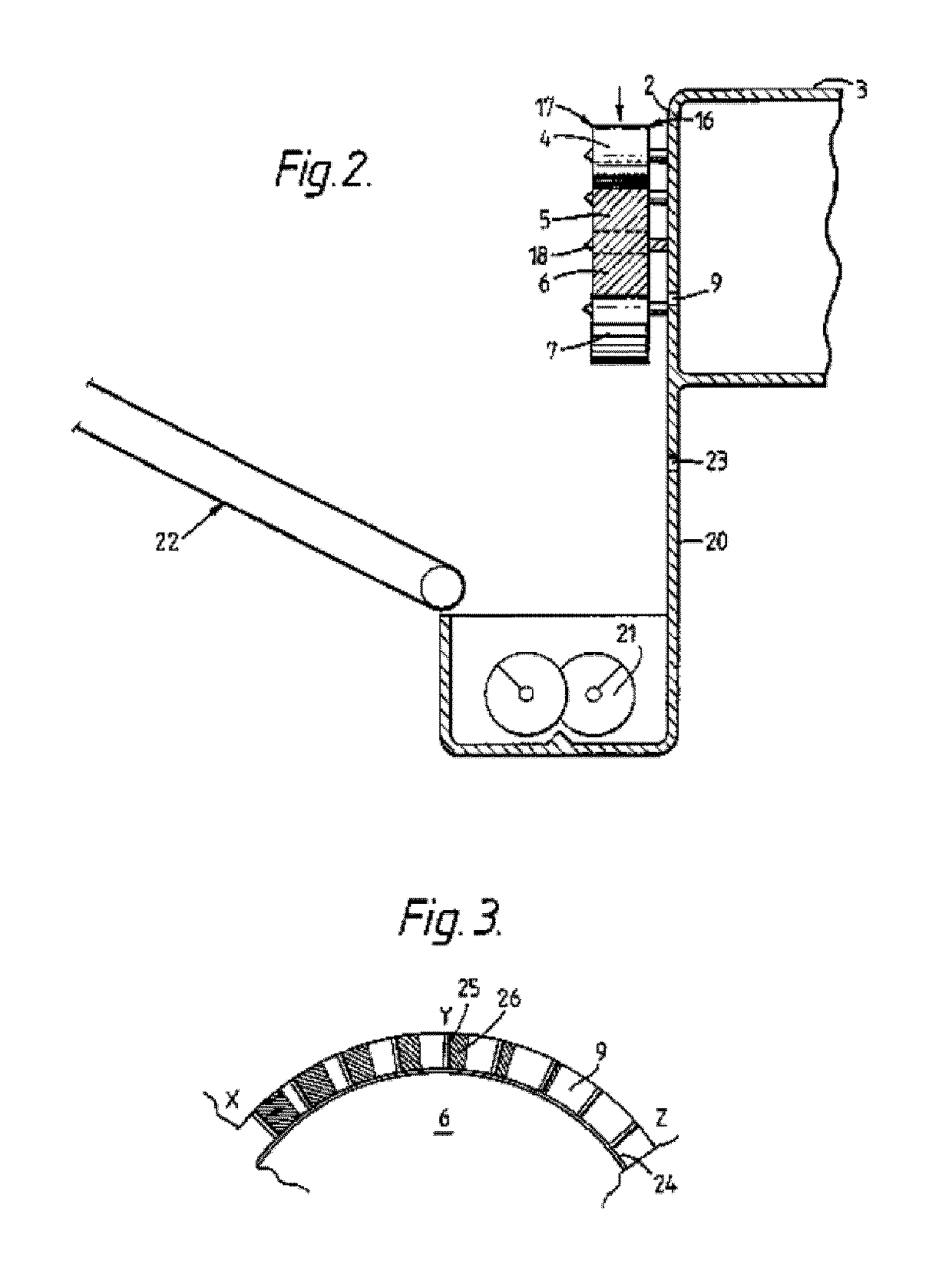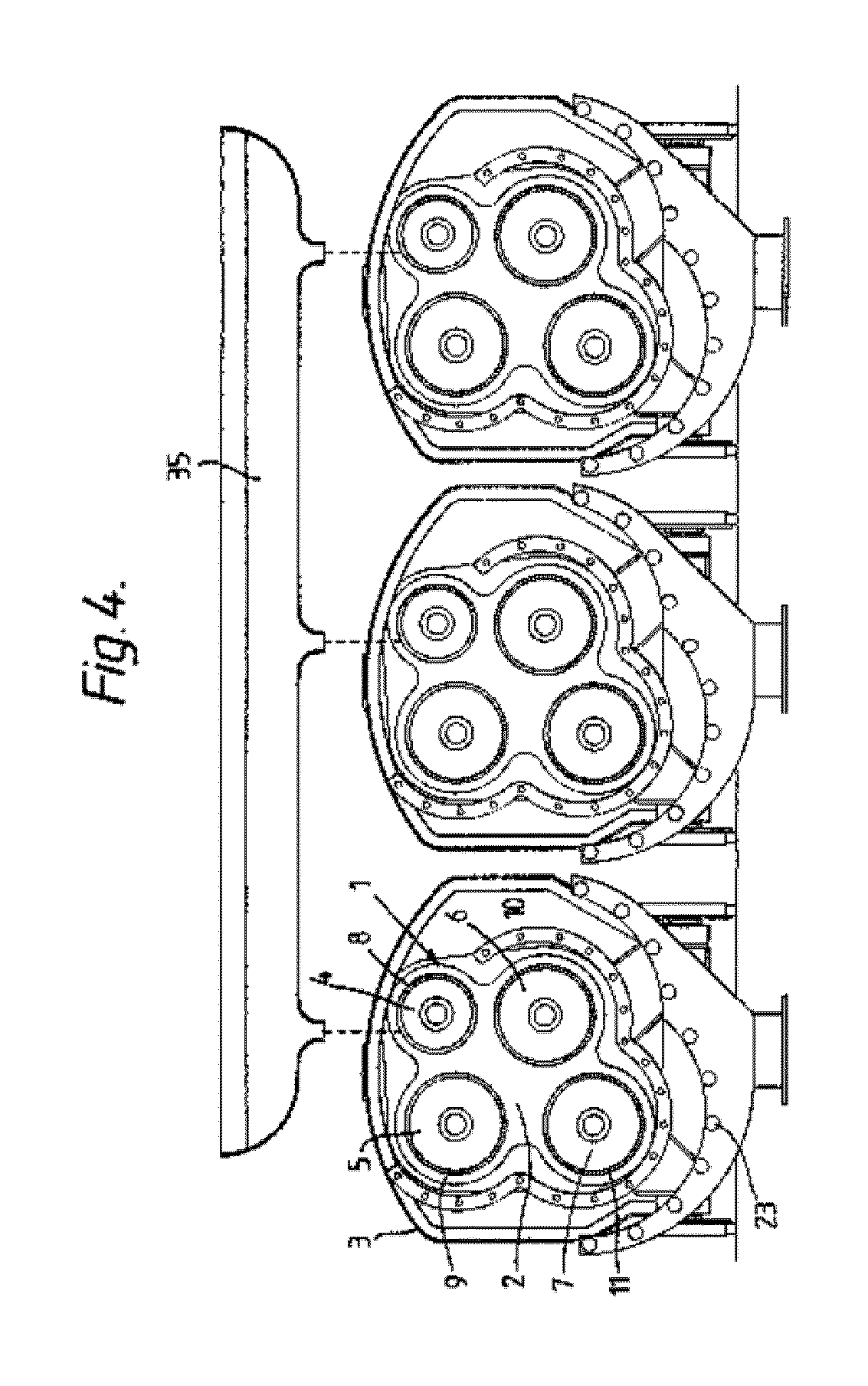Man-made vitreous fibres
a technology vitreous fibres, which is applied in the field of man-made vitreous fibres, can solve the problems of increasing the volume of mmvf substrates, increasing the space required for technical insulation, and increasing so as to avoid collapsing of buildings, and reduce the cost of technical insulation
- Summary
- Abstract
- Description
- Claims
- Application Information
AI Technical Summary
Benefits of technology
Problems solved by technology
Method used
Image
Examples
example 1
[0203]The air flow resistivity of four MMVF substrates according to the present invention (Examples A to D) was compared to the air flow resistivity of five MMVF substrates not of the invention (Comparative Examples A to E). Each MMVF substrate contained approximately 1 wt % binder. The MMVF substrates of Examples A to D were made by the method of manufacture of the present invention and the MMVF were in accordance with the present invention. The MMVF substrates of Comparative Examples A to E were made by a different method of manufacture and the MMVF were conventional MMVF.
[0204]The MMVF of Examples A to D were made on a spinner equipped with four rotors. The first rotor had a diameter of 210 mm and was driven at approximately 5,000 rpm (acceleration field 29 km / s2). The second to fourth rotor had a diameter of 280 mm and were driven at approximately 12,000 rpm (acceleration field 225 km / s2).
[0205]The MMVF of Comparative Examples A to E were made on a conventional spinner equipped ...
example 2
[0208]The diameter of a sample of MMVF of the present invention was compared to a sample of conventional MMVF. The MMVF of the present invention were made as described for Examples A to D. The conventional MMVF were made as described for Comparative Examples A to E. FIG. 5 shows that the spread of fibre diameters is much smaller for MMVF of the present invention than for the conventional wool. The range of variation is defined here as the 84% quantile minus the 16% quantile (+ / −1× standard deviation for the fibre diameter−(logarithmic normal distribution)). This means that the probability is 68% of finding a given fibre diameter in the defined region. As shown in FIG. 5, there is far less variation in fibre diameter of MMVF of the present invention, than of conventional wool. In specific tests the range of variation for MMVF of the present invention was found to be 2.3-2.4 μm at a median fibre diameter of 1.9 μm to 2.2 μm, where the range of variation for MMVF of conventional wool w...
example 3
[0209]The lambda values of four MMVF substrates of the present invention (Examples E to H) were compared to those of four MMVF substrates not of the invention (Comparative Examples F to I). The MMVF of Examples E to H were made as described for Examples A to D. The conventional MMVF of Comparative Examples F to I were made as described for Comparative Examples A to E. Lambda was measured in accordance with EN 12667. The density was measured in accordance with EN 1602. Each MMVF substrate contained approximately 1 wt % binder. The MMVF substrates of Examples E to H were made by the method of manufacture of the present invention and the MMVF were in accordance with the present invention. The MMVF in the MMVF substrates of Comparative Examples F to I were made by a different method of manufacture and the MMVF were convention MMVF. The density of each product is shown below. The lower the lambda value, the greater the resistance of the MMVF substrate to heat. As shown in Table 2 below, ...
PUM
| Property | Measurement | Unit |
|---|---|---|
| diameter | aaaaa | aaaaa |
| weight % | aaaaa | aaaaa |
| angle | aaaaa | aaaaa |
Abstract
Description
Claims
Application Information
 Login to View More
Login to View More - R&D
- Intellectual Property
- Life Sciences
- Materials
- Tech Scout
- Unparalleled Data Quality
- Higher Quality Content
- 60% Fewer Hallucinations
Browse by: Latest US Patents, China's latest patents, Technical Efficacy Thesaurus, Application Domain, Technology Topic, Popular Technical Reports.
© 2025 PatSnap. All rights reserved.Legal|Privacy policy|Modern Slavery Act Transparency Statement|Sitemap|About US| Contact US: help@patsnap.com



